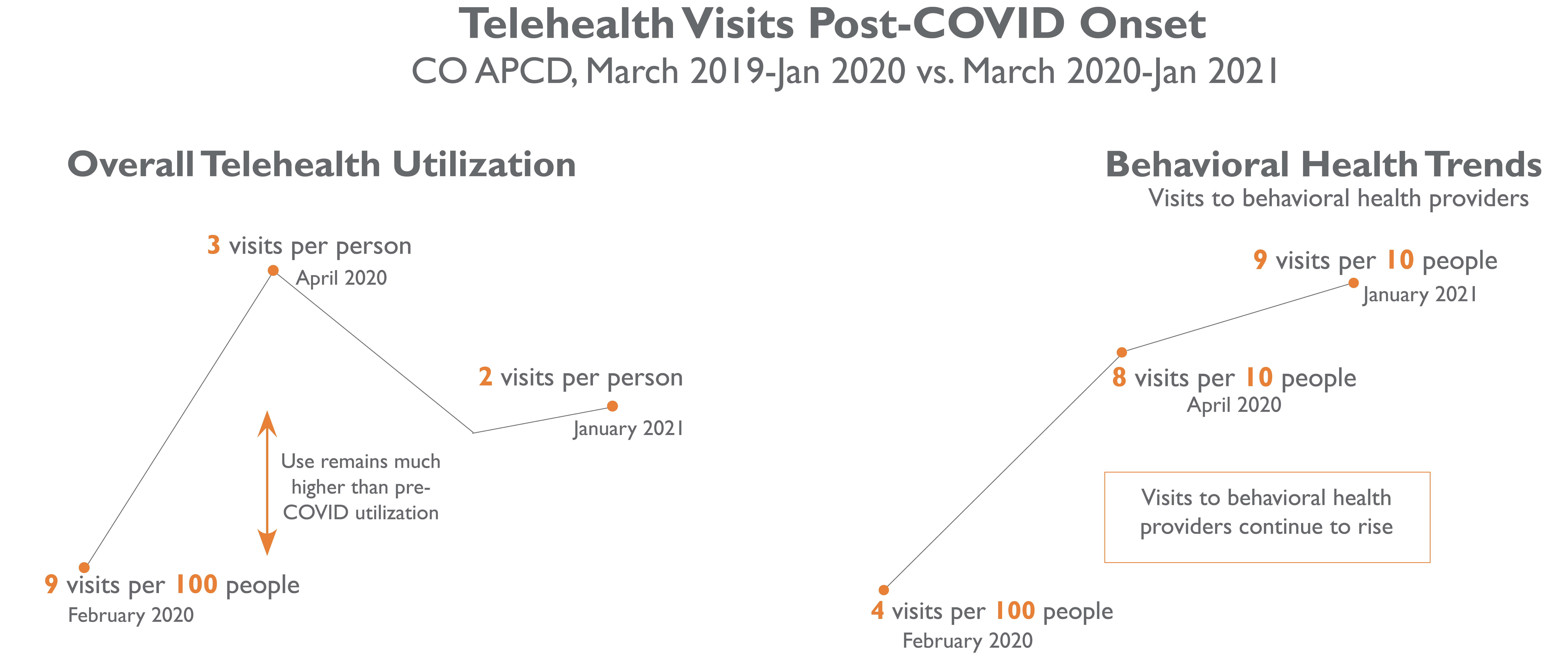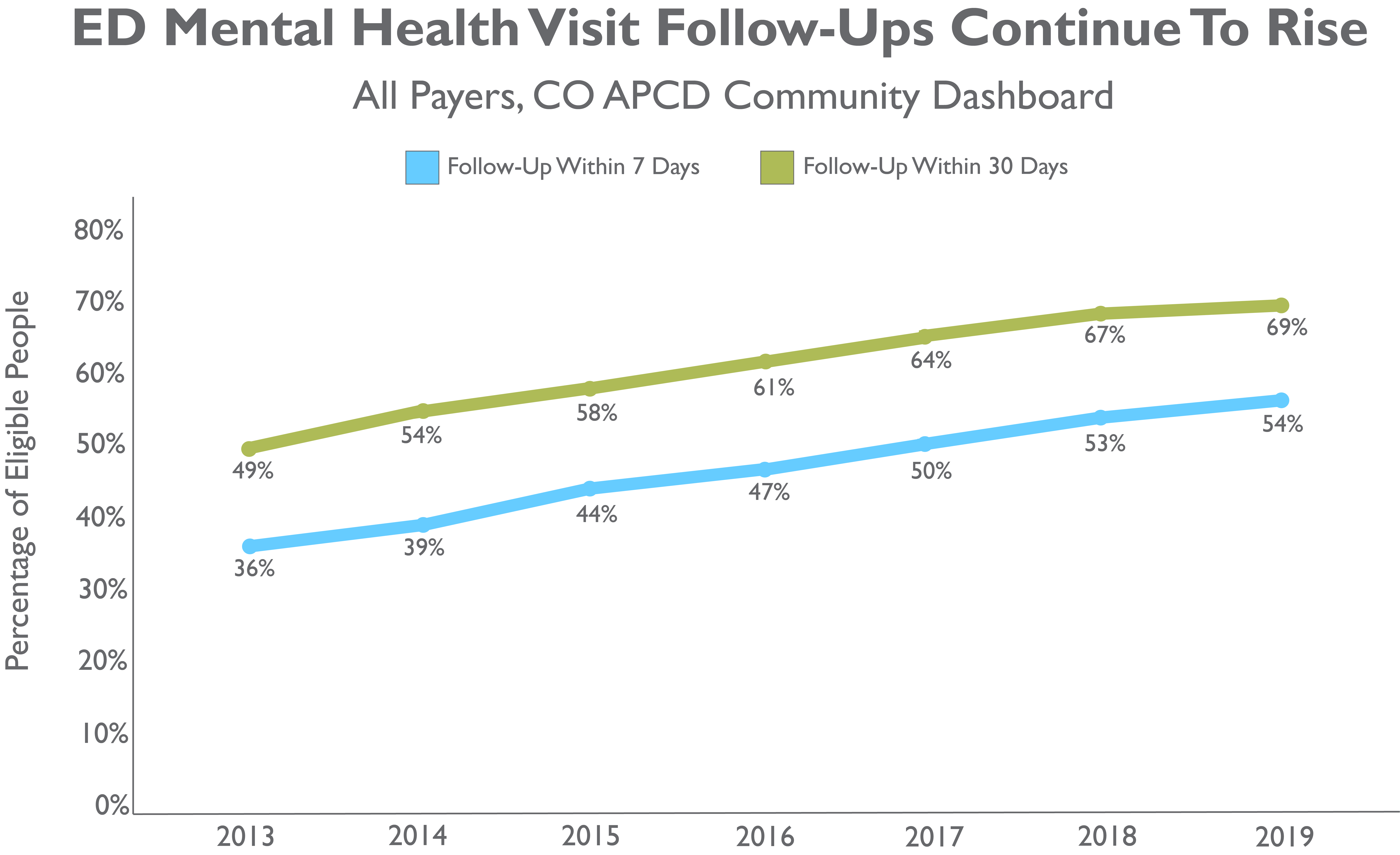Although the importance of addressing behavioral health, including mental health, has long been recognized, the onset of COVID-19 brought it into greater focus. This is also true in Colorado, where use of behavioral health services via telemedicine spiked rapidly and grew dramatically throughout 2020. In recognition of May being Mental Health Awareness Month, in this Data Dive we look at what the Colorado All Payer Claims Database (CO APCD) can tell us about treating people with mental health needs.
More People are Accessing Services
Behavioral health care claims, the overarching umbrella of services that includes treatments and services for things like mental health conditions and substance use disorders, in Colorado have consistently grown since 2013 according to claims data in the CO APCD Insights Dashboard. In 2019, there were over 8.9 million behavioral health claims across 1.3 million unique Coloradans seeking services, and in 2020, despite the downturn in services due to the COVID-19 pandemic, the number of services for roughly the same number of people increased by 600,000. The increase in volume over time may be due to a number of factors such as more access to behavioral health providers via telemedicine, better insurance coverage for behavioral health, and a reduction in the stigma associated with seeking care for behavioral health services.

Access via Telemedicine
As the number of people receiving in-person services dropped steeply in April 2020 due to COVID-19, CIVHC’s Telehealth Services Analysis shows utilization of telehealth services soared across the state. Telehealth visits with behavioral health providers and visits related to mental health increased as well. Mental health conditions represented the top reason for visits in 2019 at 35% of visits and rose to 51% in the first 6 months of 2020. In 2020 behavioral health providers outranked primary care providers as the most frequently visited telehealth provider type.
While telehealth services remain much higher than pre-COVID levels, utilization gradually dipped from the peak of 232 services per 1,000 people in April of 2020 to 163 services per 1,000 people in January of 2021. But the number of visits to behavioral health providers continue to rise, showing that the demand for behavioral health care continues to grow.

Quality of Mental Health Care
While there are many efforts to expand methods of access for mental health care in Colorado and improve care, visits to the Emergency Department (ED) continue to be a main source of support for many suffering mental health crises. A previous analysis based on the CO APCD shows that in 2018 there were over 17,000 ED visits in the state for mental health related conditions. Among the visits, the most frequent diagnosis was for anxiety disorder, followed by major depressive disorder.
To help address long-term mental health needs, it’s recommended that people who visit the ED for a mental health condition receive follow up care as soon as possible for the best outcome. The Community Dashboard shows that from 2013-2019, a patient’s chances of receiving follow-up care for a mental health visit within 7 days increased by 50%, while chances of follow-up within 30 days grew by 41%.

In spite of rural regions facing more barriers to mental health care due to a variety of reasons including provider shortages, increases in the rates of follow up for people in rural areas has also continued to increase over time, and was slightly higher than in urban areas in Colorado in 2019.

Many efforts have been made in Colorado to improve diagnosis and treatment of mental illness, expand coverage and access to those living with mental illness, and reduce stigma related to seeking care. Recently, Colorado passed HB22-1278 establishing a new Behavioral Health Administration to “create a coordinated, cohesive, and effective behavioral health system in the state.” Data in the CO APCD shows that previous efforts we’ve taken are starting to pay off, and CIVHC looks forward to continuing to evaluate the progress we make as a state to improve the lives of Coloradans.